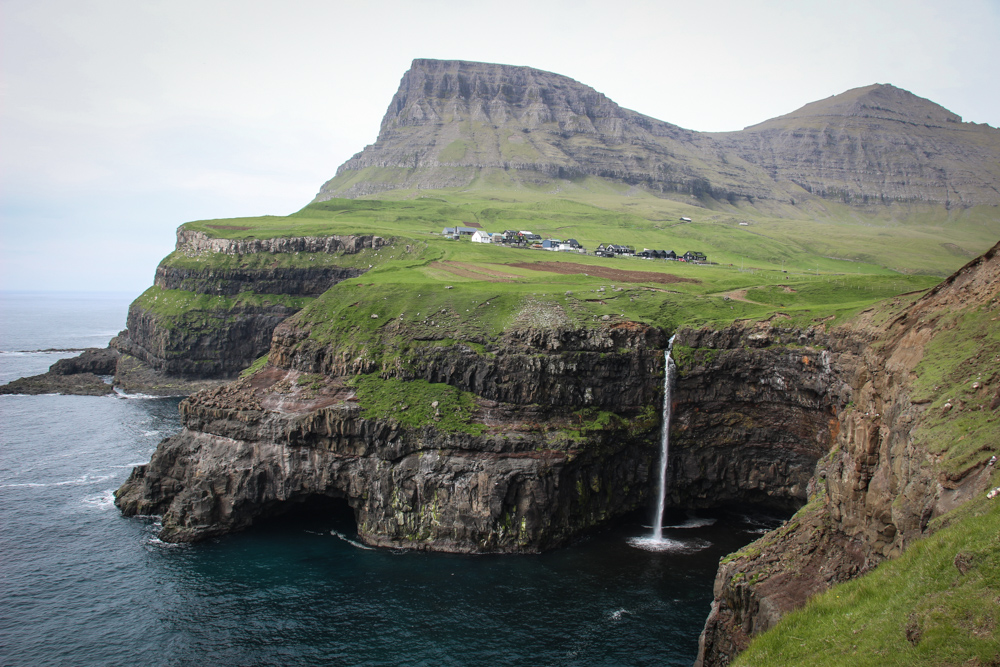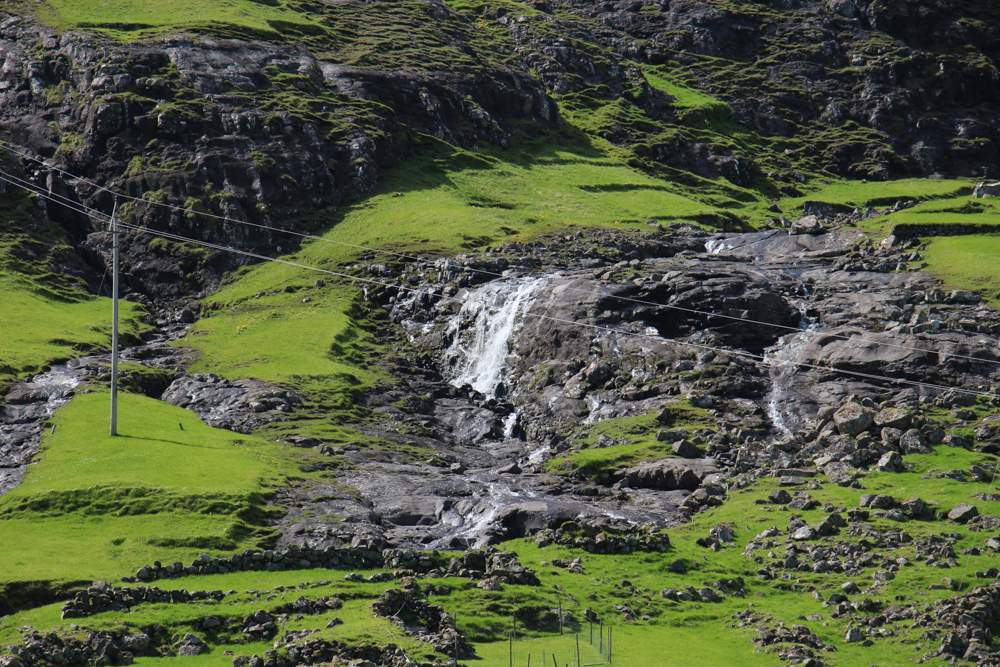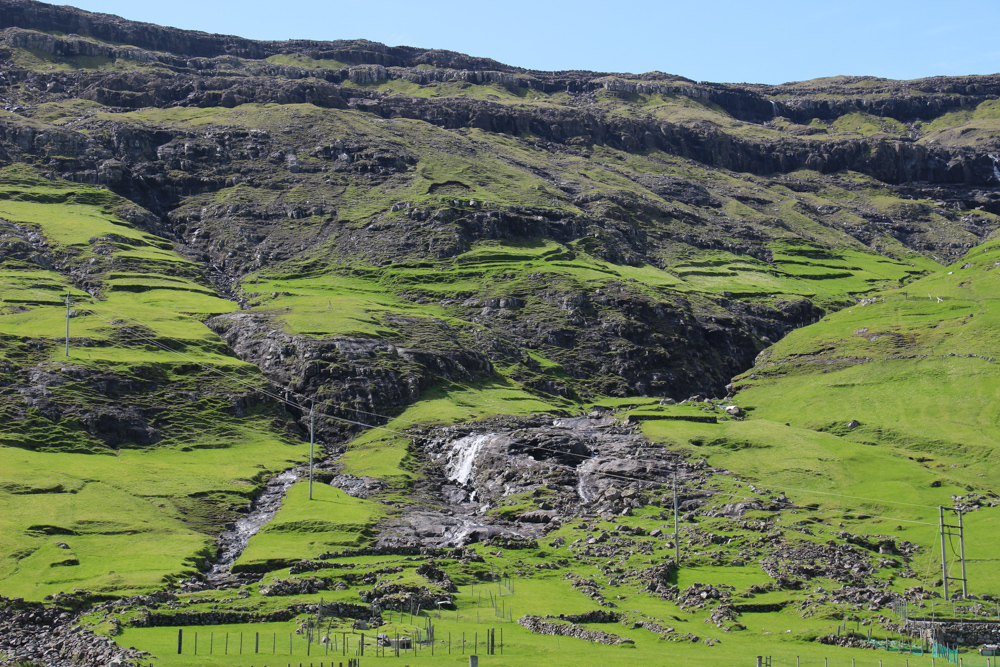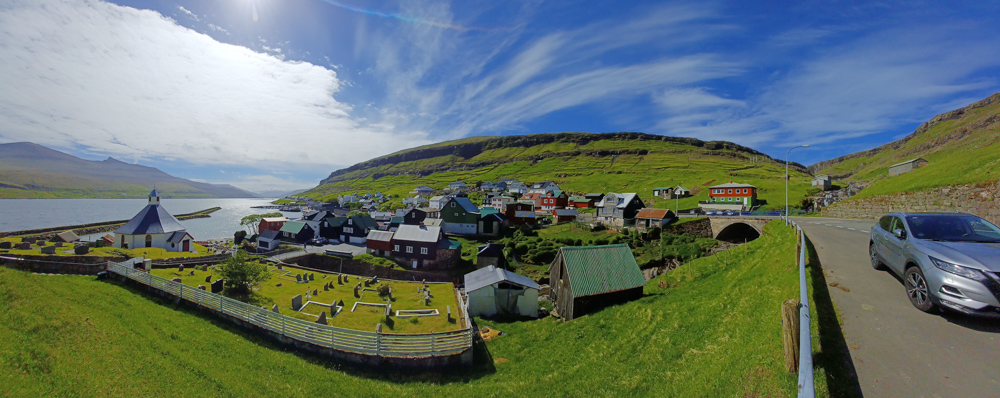Vagar, Streymoy and Eysturoy road trip – most famous wonders of the Faroe islands in one day

Second day in the Faroe islands was busy and intense – just as I like it. After waking up early from the fantastic experience of the previous day, when I went to explore the capital of the Faroe islands, found the Svartafoss waterfall and went beyond Torshavn on a horse, I went on a booked tour which was supposed to show me the highlights and most popular places in these islands. I was trying to save time and redirect every valuable hour on hikes and going up the mountains, so having a day which covers all that was an excellent decision. This went “against” my grain as I primarily planned to walk to these places, but having only 7 days on my disposition required a bit of readjustment. This tour covered most popular must see locations on the Vagar, Streymoy and Eysturoy islands.
The tour and the execution of it is one of the best I have ever experienced and paid for. You know how some people LOVE what they do and give 500% by being involved, and doing everything so thoroughly that they cannot fail to inspire everyone around them? Elsa Maria and Jens Petir (siblings), did their best in impressing us with the scenery, while explaining what we are looking at and what is the historical, geological or cultural importance. It is very hard not to fall in love with the Faroe islands. Everything around you is unbelievably eye catching and gorgeous, and having someone so knowledgeable elevates the whole experience. Due to this continuity I will pack all these activities in one post, in order to have the proper flow of how it went. Hope you will enjoy it and find some inspo for your own trip to the Faroe islands.
Funningur
The first POI was Funningur, the village in which the Norwegian Vikings led by Grimur Kamban decided to settle upon their first arrival in the 8th century with intention to populate the islands. We stopped by the road to get a glimpse of it. My plan was to hike to the Hvithamar point over Funningur the day after, to take the pictures and videos over that amazing location; this will be covered in another article, supported with photos which I cannot believe that are mine.
 There is a dispute over who came here first; one of the theories is that the Irish monks came first, over 200 years before the Vikings.
There is a dispute over who came here first; one of the theories is that the Irish monks came first, over 200 years before the Vikings.
Gjógv
We continued northwards to the village Gjógv. Besides being unbelievably picturesque and extremely well taken care of, the village has an unique structure designed by nature – an enormous epic gorge. There was no jaw left in place when we approached it and the weather amplified the scenery even more.
The gorge is enormous, over 200 m long, and it had served as a natural harbor. We have spent there quite a lot of time, admiring the view.
I started loving to observe the photos after I did the entire trip around the whole archipelago, because soon after I started recognizing the islands in the background, often covered in fog. In these photos, behind the gorge you can see the Kalsoy island, which was a particularly fun place to be at a few days after.
Risin og Kellingin
There are many famous sea stacks on the coasts of the Faroe islands but Risin and Kellingin (the Giant and the Witch) are probably the ones who get the most attention. I have seen them from several different points and several islands.
There is a legend which tells us the story about the giants who wanted to bring the Faroe islands back to Iceland, so a giant and a witch were sent to bring them back. The giant stayed in the sea while the witch climbed up the mountain with a heavy rope to tie the islands together so that she could push them onto the giant’s back. However, when she attached the rope to the mountain and pulled, the northern part of the mountain split. Further attempts were also unsuccessful, and they struggled through the night, but the base of the mountain was firm and they could not move it. If the sun shines on a giant or witch, it turns to stone. So it was that as they continued to struggle they didn’t notice time passing, and as dawn broke a shaft of sunlight put a stop to their efforts by turning them to stone on the spot. They have stood there ever since, staring longingly across the ocean towards Iceland.
Tjørnuvik
The next point was the village Tjørnuvik. Incredibly beautiful and excellently maintained, it was a true feast for our eyes. Here, on the first photo, you can see the Risin og Kellingin seastacks from another angle/position.
If I did not already love the turf roofs, at this place I would lose my mind because of their color and lusciousness. The Faroe islands are quite warm during the entire year and the rains are a regular occurence, so this type the greenery grows in perfect conditions. I chose the perfect moment to arrive to these islands – everything was in full bloom.
When you stand on the coast of Tjørnuvik, behind you is a mountain; when you go over it, you will reach the village Saksun on the other side. That village was our next station, but we went there in a car.
Saksun
On the other side of the mountain is the village Saksun. We approached it by car instead of walking over towards it – my plan was to return here and walk over the mountain (Tjørnuvik to Saksun or the opposite) during the week in the archipelago, but in the end I had no time.
If you ever googled the Faroe islands, you had to stumble upon the photos taken at Saksun village. This is probably one of the most famous places to visit and it appears in every promo article or PR materials. It is known for being located in the corner of a lagoon, and in every one of those photos it looks extremely grim, serious and dreary. On the day when I came to visit it, the weather was in the exact opposite mood.





 There are people who reside in Saksun at the moment, even though the village looks like an outdoors museum. It still holds a farmhouse called Dúvugarður, as a remnant of past times.
There are people who reside in Saksun at the moment, even though the village looks like an outdoors museum. It still holds a farmhouse called Dúvugarður, as a remnant of past times.
Haldarsvik
We stopped here just for a moment, to take a few pictures. Literally, every village looks like it came to life from a painting.
Fossa
Fossa is a multi-story waterfall, which on many pictures online is often carried by the winds. This picture was taken from a road on the opposite side of the fjord.
And these are taken while we took a break near the waterfall, after we drove to it.
Here we got served some famous faroese delicacies – whale meat, whale ham and whale blubber with potatoes. I have no ethical issues with eating animals, but I do have a massive issue with anything taken from the sea to be eaten, so I ate reluctantly and in miniature quantities, just to get the gist of it.
Drangarnir, Tindholmur and Gasaholmur
Like Risin og Kellingin, these seastacks and islands have their own portion of attention.
From the let to the right – Drangarnir, Tindholmur and Gasaholmur.
Bøur
The name of the village is literally unpronounceable to everyone without knowledge of north germanic languages and the guide had a lot of fun teaching the group how to say the name of it. It lies not far away from the Vagar airport, westwards.
Bøur is, expectedly, very green and luscious and pleasant to be at. We walked around it and spent some time adoring the houses in the village which lies on the coast of Sørvágsfjørður.




 I don’t think that I could ever get bored of this greenery and I seriously think that every house should have a such cover on the roof.
I don’t think that I could ever get bored of this greenery and I seriously think that every house should have a such cover on the roof.
Gasadalur / Mulafossur
The most famous point of interest of the entire archipelago is the waterfall which falls into the ocean. It is located in the valley Gasadalur (far. the valley of geese) and is named Mulafossur (far. horse snout’s waterfall). This was the place with the most tourists I have seen during 7 days there, and to take a photo of the waterfall without anyone in it was a true challenge.
 The first photos of this waterfall that I have ever seen were much different than this one. Besides being heavily photoshopped and distorted with obviously unnatural but very pretty colors, the waterfall had something that I have never seen before – due to the strong winds, the water falling down turned upwards and looked like a fog “falling up”. I was so fascinated by this and often thought of it. I knew I had to see it with my own eyes.
The first photos of this waterfall that I have ever seen were much different than this one. Besides being heavily photoshopped and distorted with obviously unnatural but very pretty colors, the waterfall had something that I have never seen before – due to the strong winds, the water falling down turned upwards and looked like a fog “falling up”. I was so fascinated by this and often thought of it. I knew I had to see it with my own eyes.
Oyggjarvegur
This is a famous faroese scenic road which goes by the Norðradalsskarð mountain pass, where you can see the island Koltur in the background. Here also lies the only prison in the entire archipelago, Mjørkadalur prison.



 Here the weather lost its patience and it started to drizzle. This made us stop less and the guides
Here the weather lost its patience and it started to drizzle. This made us stop less and the guides
Nykurin
One of the first things you’ll see when you exit the plane at Vagar is a metal sculpture of a horse, prancing in the Sørvagsvatn lake. The statue, called The Nix, pays a tribute to the local myths – The Faroe islands are incredibly rich in folklore and traditional storytelling.
The Nix aka Nykur is described as a horse with magnetic beauty, which makes everyone want to ride it. Unfortunately, behind the pretty facade is a merciless beast; it uses its beauty to attract humans, and when they try to ride it, The Nix runs into the lake and drowns those on his back.




























